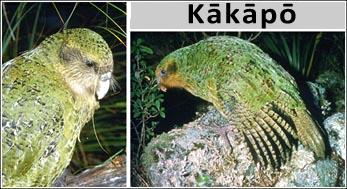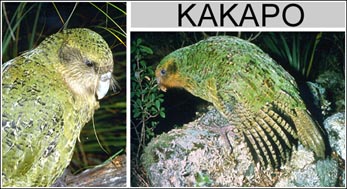Kākāpō II
This task is about answering questions about the kākāpō.

Some notes:
- There are only about 250 kākāpō left in the world. At one time there were only 52.
- The kākāpō is found only in New Zealand.
- It is nocturnal, i.e., sleeps in the daytime.
- It is flightless.
- The feathers are yellow-green.
- In the breeding season males make a low, booming sound.
- It is the heaviest parrot in the world.
- Kākāpō breed only once every 2-4 years.
- Introduced mammalian predators like rats, stoats and cats are a problem for kākāpō survival.
- The Department of Conservation moved the birds to predator free islands to breed.


